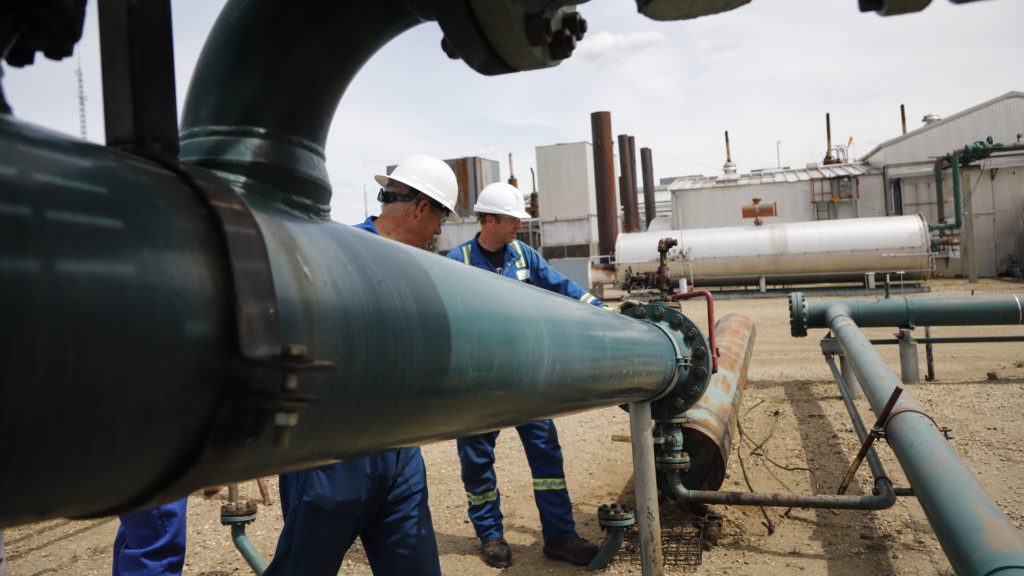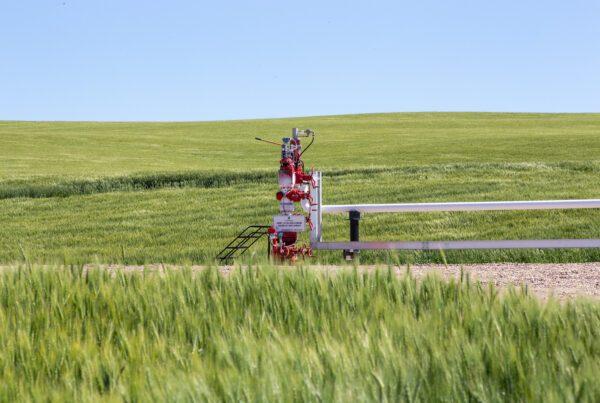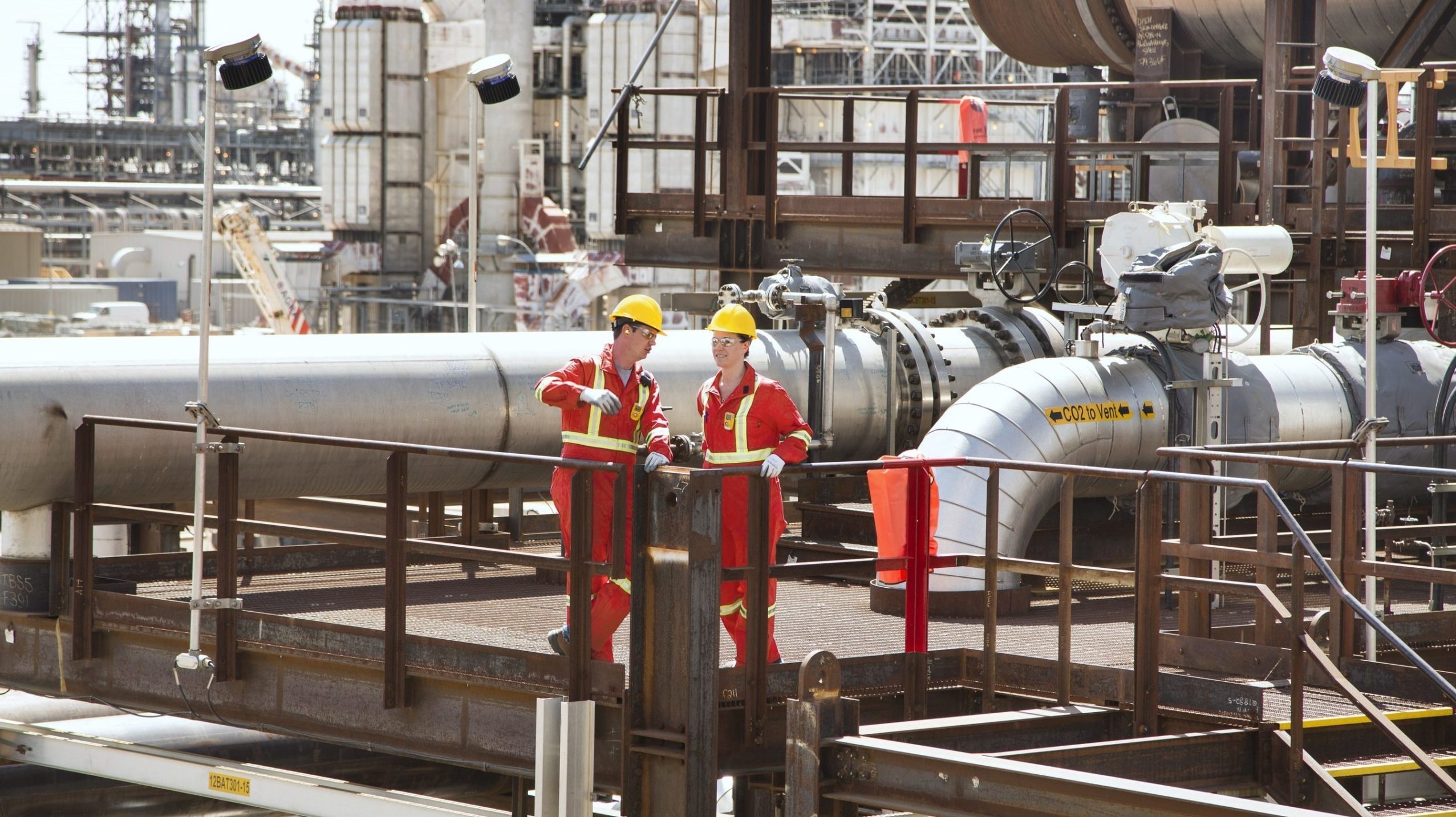
In the middle of rolling central Alberta farmland just a few minutes’ drive northeast of Red Deer, a solitary pumpjack sits in the middle of a grain field. But rather than extracting oil, this well pumps important data on the geology underneath the field and the permanently stored carbon it holds.
Enhance Energy, one of Canada’s first carbon management companies, is using that data to help it advance its carbon capture, utilization and storage (CCUS) operations.
For Candice Paton, Enhance’s vice-president of corporate affairs, that repurposed pumpjack, covered with instruments to provide information about the formation beneath it, represents how Canada can maintain its leadership in the burgeoning CCUS industry.
“Canada was at the forefront of this industry when Enhance Energy was formed in 2008. We are still leaders in this space and there are things we can learn from others,” says Paton.
“Continuing to do CCUS right ensures Canadians will continue to thrive with our economy and climate.”
Since 2000, carbon capture and storage projects in Canada (including Enhance Energy’s operation at the end of the Alberta Carbon Trunk Line) have sequestered more than 48 million tonnes of CO2, or the equivalent of taking more than 10 million cars off the road.
Canada’s early leadership in the industry stems from early regulatory clarity and clear rules on pore space, the underground formations used to store captured carbon emissions, Paton says.

The Alberta government treats pore spaces as Crown assets, allowing companies that want to sequester carbon in the province to deal directly with the government rather than individual landowners, as is the case in other countries.
Alberta’s management of pore spaces is also designed to provide benefits for Indigenous partnerships.
“Right off the hop, you are welcome at the ownership table. Now let’s go to work,” says Chief Billy Morin, managing director of Axxcellus Capital and former chief of the Enoch Cree Nation.
“It’s not a silver bullet in terms of consultation in getting the project off the ground but it does change the responsibility for First Nations to look for solutions as opposed to just saying ‘no.’”
The Nation is one of four Indigenous communities partnered with Enbridge on the proposed Open Access Wabamun Carbon Hub.
Canadian CCUS operators also have operational experience from the early projects that is valued by other countries.
For example, Norway’s Northern Lights project incorporates learnings from the Quest project in central Alberta.
“[Another] great example is the Geological Survey of Denmark came to Enhance’s sequestration facility at Clive to learn from us,” says Paton.
“How do we manage this safely hand in hand with landowners and the regulator? How do we manage our measurement monitoring verification system so we can provide confidence to the public as well as the landowners, regulator and our customers in industry?”

But Canada can also take some lessons from other countries developing their own CCUS industry. The federal government’s CCUS investment tax credit is in sharp contrast to the steps taken by governments in the United States and Europe, she says.
“The U.S. Inflation Reduction Act was put in place quickly and clearly. And it really pushed companies to get across the final investment decision line,” Paton says.
“Canada has worked on an investment tax credit to balance incentives to keep projects here, but we have a long way to go before it’s in place. It’s been under discussion for a very long time, and it excludes technologies that would act as stepping stones to even better technologies.”
Morin shares concerns about the federal government’s delay in implementing a tax credit but has worked to find other avenues to help bring financing to projects.
“We are looking for certainty out of Ottawa in terms of incentives. When international companies come here to invest in CCUS, the margins are thin so some level of government support is needed,” he says.
The governments of Canada and Alberta have previously supported CCUS projects. Alberta is investing $1.24 billion for up to 15 years in the Quest and Alberta Carbon Trunk Line projects.
Despite some challenges, both Paton and Morin are positive about the future of CCUS and Canada’s role as a major player.
“I’m optimistic we can do this right, and it will benefit all of us as Canadians,” Morin says. “We have some specifics to work on, but we are headed in the right direction.”
The unaltered reproduction of this content is free of charge with attribution to Canadian Energy Centre Ltd.